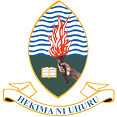
Instructions to Authors
The Operations Research Society of Eastern Africa (ORSEA) Journal
Operations Research Society of Eastern Africa (ORSEA) Journal, is a semi-annually refereed journal publishing original scholarly and practitioner material on operations research. It is open to, and indeed encourages a wide range of topical issues and emerging methods, conceptual approaches, and substantive problem areas within the domain of operations research. It is devoted to the improvement and further development of theories and practices of operations research and it is designed to appeal to academics, practitioners and policy makers. Articles submitted for publication must conform to “ORSEA Authors’ Guidelines”.
ORSEA Authors’ Guidelines
1.0 General Instructions
- Manuscripts intended for publication should be submitted electronically in ‘word’ format, single spaced, with wide margins (at least 2.5 cm on all four sides), as measured on standard A4 paper. This rule applies to the entire manuscript, including the reference list, notes and appendix materials—if any. Be submitted at http://journals.udsm.ac.tz/index.php/orsea/index
- Title or first page (not a separate file) should include the following: (i) title of the article; (ii) name of the author(s) and title(s); (iii) institutional affiliation; (iv) abstract of no more than 250 words and (v) 4-5 key words.
- Manuscript should range between 5,000 and 8,000 words (including references and appendices)
- Article submitted must follow APA styles in terms of in-text citations, references, tables and figures.
- Receipt of a manuscript is acknowledged promptly by the Editor. An initial screening is done to determine the suitability of the manuscript. Key evaluation factors considered are theoretical and practical significance, interest to ORSEA Journal target readership, originality, appropriateness of style and presentation, methodology, clarity and accuracy of expression.
- Assuming the manuscript is considered suitable for publication, it is assigned to two or more blind reviewers.
- Each reviewer provides careful evaluation of the manuscript, makes a recommendation to the Editor, and provides comments for the author(s).
- The Editor appraises the reviews and makes a final decision regarding publication of the manuscript. Every effort is made to obtain prompt reviews and make early decisions (about eight to ten weeks) regarding publication.
- Possible decisions on a manuscript are:
(i) Accepted as it is
(ii) Accepted after minor revision
(iii) Accepted after major revision
(iv) Rejected
If minor revision is required, authors should return a revised version as soon as possible, but not more than 15 days. If major revision is required, authors should return a revised version within 25 days.
- In case the manuscript passes the evaluation without corrections, the author (s) is promptly informed of the acceptance. Otherwise, the author(s) receives the reviewers’ and editor’s comments and is given maximum of one month to resubmit the revised manuscript.
- Detection of Plagiarism: ORSEA Journal will run similarity detection software before publication. The cut-off point for the purpose of these regulations shall be 15% excluding genuine cases referred in the text such as own publications, references, bibliography and preliminary pages. The originality report of more than 20% shall indicate that plagiarism has occurred, and there the article will be automatically rejected.
- Upon submission of an accepted manuscript (post-review) the author is asked to submit a signed statement formally declaring that publication of the article by ORSEA Journal would not contravene any copyright or other contractual agreements relevant to the article or the research upon which it is based. This requires that the article is not already published, nor in press, nor under consideration for any other publication where acceptance and publication is anticipated. It also requires that all copyright protocols to works cited, used, paraphrased and quoted have been duly observed by the author(s) appearing within the manuscript to be published by ORSEA Journal.
- Papers presented in a conference in an abstract form can be published as a full paper in the ORSEA Journal. However, papers presented at conferences and published in the conference proceedings will not be published on the ORSEA Journal unless significant improvements are made. Republishing in a journal exactly the same version as in the conference is considered not ethical.
- Complementary copies: Each published submission is entitled for two hard copies of the respective volume or pass-word for accessing the respective volume. That is, complementary copies are by article and not by authors.
2.0 APA referencing guidelines
Generally, authors are encouraged to familiarise themselves with the latest APA referencing guidelines. Some other Important Tips for APA Style Reference are:
- Your references should begin on a new page. Title the new page "References" and center the title text at the top of the page.
- All entries should be in alphabetical order.
- The first line of a reference should be flush with the left margin. Each additional line should be indented (usually accomplished by using the TAB key.)
- While earlier versions of APA format required only one space after each sentence, the new sixth edition of the style manual now recommends two spaces.
- The reference section should be single-spaced.
- All sources cited should appear both in-text and on the reference page. Any reference that appears in the text of your report or article must be cited on the reference page, and any item appearing on your reference page must be also included somewhere in the body of your text.
- Titles of books, journals, magazines, and newspapers should appear in italics.
- The exact format of each individual reference may vary somewhat depending on whether you are referencing an author or authors, a book or journal article, or an electronic source.
3.0 When submitting a paper, the author should attach a separate covering sheet indicating the number of words and the author's name, title, current physical address, telephone number, and e-mail address.
4.0 Permissions: Prior to article submission, authors should clear permission to use any content that has not been created by them. Failure to do so may lead to lengthy delays in publication.
5.0 Submission Preparation Checklist
As part of the submission process, authors are required to check off their submission's compliance with all of the following items, and submissions may be returned to authors that do not adhere to these guidelines.
- The submission has not been previously published, nor is it before another journal for consideration (or an explanation has been provided in Comments to the Editor).
- The submission file is in Microsoft Word file format.
- Where available, URLs for the references have been provided.
- The text is single-spaced; uses a 12-point font; employs italics, rather than underlining (except with URL addresses); and all illustrations, figures, and tables are placed within the text at the appropriate points, rather than at the end.
- The text adheres to the stylistic and bibliographic requirements outlined in the Author Guidelines, which is found in About the Journal.
- If submitting to a peer-reviewed section of the journal, the instructions in ensuring a blind review have been followed.
- The document has gone through professional language editing.
6.0 Privacy Statement
The names and email addresses entered in this journal site will be used exclusively for the stated purposes of this journal and will not be made available for any other purpose or to any other party.




